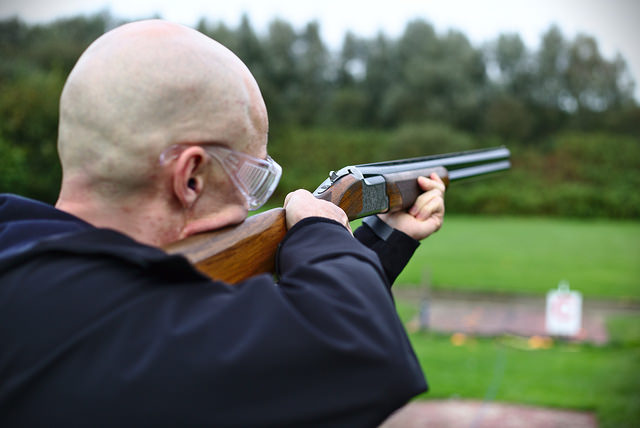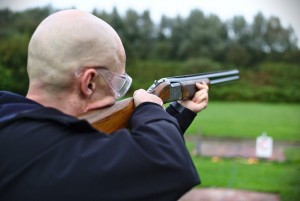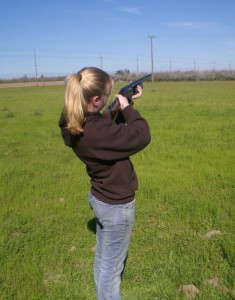This month, we spoke to veteran shotgun champion, John Bidwell. The Suffolk-based shooter is highly respected in the world of shooting, and has won in venues all over 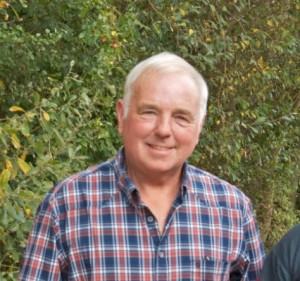 the world – from Spain to Australia, Germany to America, and many at home in Britain. In this interview, he shares with us his illustrious shooting career, his conferencing and shooting venue High Lodge, Clay Pigeon Shooting Association, charity work, and much more.
the world – from Spain to Australia, Germany to America, and many at home in Britain. In this interview, he shares with us his illustrious shooting career, his conferencing and shooting venue High Lodge, Clay Pigeon Shooting Association, charity work, and much more.
With seven World Championship titles in individual events and 30 years’ participation in the Great Britain shooting team, 68-year-old John Bidwell is still competing at international level in the Super Veteran category. He is the inventor and manufacturer of the Auto Sporter Clay Trap machine and the founding owner of one of the most prodigious shooting venues in the country. John is the author of Move, Mount, Shoot: A Champion’s Guide to Sporting Clays, described as ‘the only comprehensive manual’ of the maintained lead method of shooting.
Do you come from a shooting background, John?
No, I don’t. My dad really wasn’t a fan of guns, although he’d worked as an armourer during the war. I got no encouragement from my parents when it came to shooting. I loved the sport, though, and I grabbed every opportunity to practise. In the late 1960s, when I was in my early twenties, I joined a shooting club, and ten years later I was part of the Great Britain shooting team. I’d never had a single lesson!
Tell us about your first shooting club and how you moved on to High Lodge.
The sport had been rapidly gaining popularity during the 1970s, and in 1982, we – my wife, Sally, and I – leased a bit of land at Henham Park in Suffolk, bought some second-hand equipment, and set up our first shooting club. I’d already got this vision of helping to make shooting a more mainstream sport, giving everybody the opportunity to have a go. I did some coaching while Sally ran the clubhouse. I say ‘clubhouse’ – it was a portable hut where members could get a hot drink and a burger!
In 1989, when the lease on the Henham Park land was about to run out, we got the opportunity to buy 100 acres of land at Hinton in Suffolk.
Can you describe High Lodge?
Well, I’m very proud of the fact that it’s one of only a few British shooting venues with a CPSA Premium rating. We’re now a 120-acre luxury resort, catering for conferences and corporate hospitality, short breaks, and celebratory occasions; we do quite a few weddings, actually. I run it with my two daughters, Jane and Helen. Sadly, Sally died in August 2011. She’s very much missed in the shooting world.
A popular feature at High Lodge is our ‘indoor’ outdoor range. Safety cages are incorporated into 12’ by 8’ wooden structures that provide shelter for people and equipment. We have a golf course, which opened in March 1998, an archery range, and two half-acre fishing lakes.
As far as accommodation goes, we’re growing. At the moment we have 19 luxury lodges – with planning permission for an additional 32, which are presently under construction. We have some rather nice function rooms and five-star catering, with extensive parking – and even helicopter landing facilities.
Is the Auto Sporter Clay Trap your own invention?
Absolutely. When we opened High Lodge, all the traps were manually operated, which was restrictive for shooters, because you couldn’t just pop out for a session without booking someone to pull. So, during the following few years, I worked on the production of electrically powered traps. My first model ran off the mains, but eventually we had the Auto Sporter Clay Trap machine, which is still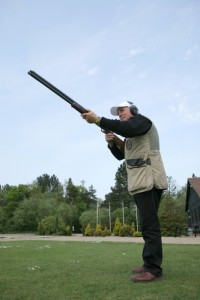 manufactured on site at High Lodge by experienced technicians and engineers. It’s supplied to shooting clubs and competitive events all over the world and is used in conjunction with an automatic counter system.
manufactured on site at High Lodge by experienced technicians and engineers. It’s supplied to shooting clubs and competitive events all over the world and is used in conjunction with an automatic counter system.
What is your connection with Blaser, the German gun manufacturer?
Fourteen years ago, Blaser got me to help them design their new F3 model. I showcased the F3 prototype shotgun for sale in the FITASC World Championship in France – and actually won! This was great publicity for the F3. I’ve had a close relationship with Blaser and the F3 ever since.
… And other sponsorships?
I have a long-standing relationship with Eley, the leading shotgun cartridges manufacturer, and I’ve recently engaged in mutual promotion with Lings of Lowestoft and their Mitsubishi L200 truck.
Tell us about your relationship with the CPSA. You’re Honorary Vice President.
The CPSA – that’s the Clay Pigeon Shooting Association – takes good care of its members. But the recruitment of new members is a role typically taken on by clubs like ours. The have-a-go sessions that I organise at shooting events, and the accessibility to the sport that High Lodge offers, open the door to beginners. At High Lodge, a special rate is offered to anyone who joins the CPSA – in fact, High Lodge recruits more CPSA members than any other club in the country.
What’s coming up this year for you?
Okay – I’ll give you a list of events. There’ll be have-a-go sessions at most of these.
High Lodge is well known for its charity events. Is this an important part of your work?
Yes, we’ve hosted many fundraising events for causes like East Anglian Children’s Hospices (EACH), East Anglian Air Ambulance, Cancer Research, The Multiple Sclerosis Society, Macmillan … and lots of others. One particular cause that’s close to our hearts is the care of Guillain-Barré sufferers; this is the debilitating disease that attacked Sally five years ago. We have an annual memorial shoot for Sally. I donated my solid silver World Championship trophy, won in 1996, as the champion’s prize for this event.
John is running a series of ‘have a go’ drop in sessions at his lodge. The dates are.
April 25th-26th: East Anglian Game & Country Fair at the Norfolk Showground, NR11 7WW
June 15th-18th: The Clay Shooting Classic at High Lodge, IP17 3QT
July 2nd-3rd: Country Fair at Heveningham Hall Estate, IP19 0PN
September 1st-4th: CPSA British Open Championship at High Lodge, IP17 3QT
September 10th-11th: Sandringham Game and Country Fair, PE35 6EN
You can learn more about John Bidwell and the services and events at High Lodge by heading to the official site.
And you can check out out our range of shotgun for sale by heading to our store. We sell shotgun cartridges by a range of manufacturers as well.
And learn more about clay pigeon shooting by heading to the CPSA website here.


